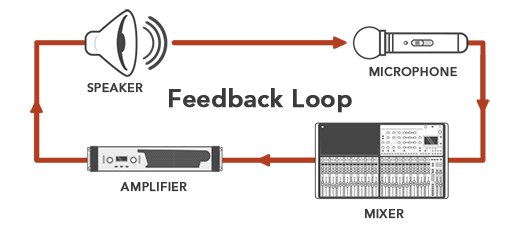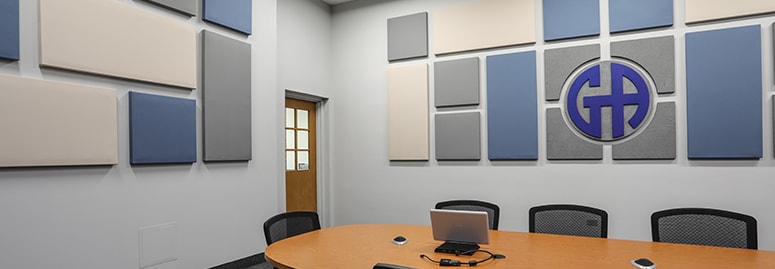In meeting room or boardroom applications, microphone placement plays a key role in great sounding audio calls. Even in video calls, audio quality holds an integral position and can make or break a good meeting experience. Another challenge in meeting scenarios is the number of people, their seating positions, proximity to the nearest microphone and their speech levels.
To add to this, managing sound for music is very different from managing sound for speech. Music is about fidelity while speech is about intelligibility. Anything that interferes with the ability to clearly hear words needs to be eliminated. It is important to know that every space is different so are its requirements. Keeping this in mind, our blog shares key tried and tested tips for better audio and speech clarity during conference calls.
Controlling feedback

People often blame the microphone, but ‘feedback’ is caused by a combination of several things – acoustics, amplification levels, microphone directionality, or loudspeaker location. In a room with loudspeakers, avoid omnidirectional microphones as they cannot be adequately aimed. Be mindful of your mic positioning and if a speaker tends to roam, caution him not to walk in front of the loudspeaker with a live mic.
Know microphone pickup patterns

Polar patterns are ways of describing the sensitivity of a microphone in a given direction. Omnidirectional microphones capture sound uniformly from all directions and are more forgiving, while cardioid microphones have a more directional or “heart-shaped” pattern. Although cardioid microphones can be used to remove unwanted background sounds, you’ll need to encourage users to talk directly into them.
NOM-based gain attenuation

NOM stands for Number of Open Microphones. As more mics are opened up the mic mixer reduces overall gain. Every live/open microphone is another path for potential feedback and unwanted noise. When setting up your audio system, use the fewest number of mics possible and mute any that aren’t actively being used. This could be as simple as asking the participants to mute their laptop mic when they aren’t speaking, to a technician controlling multiple mics with a soundboard.
Keep an eye on the spacing

Having two open microphones at different distances from the same sound is problematic. Avoid this by muting unneeded mics, moving them further away, or using directional microphones. If a presenter is wearing a lavalier mic and then steps up to the podium or picks up a handheld, make sure only one of the mics is active.
Basic room acoustic treatment

Reflective (hard) surfaces can cause intelligibility because the sound bounces around the room and arrives at the microphone at slightly different times. Sound-absorbing wall and window treatments can significantly reduce room reverberation. If sound-treatment isn’t possible, try moving the microphone further away from the offensive surface.
(Image courtesy: www.harman.com)
For more information on the best audio conferencing solution for your business in India,
Contact Actis at 022-30808080 or at contact@actis.co.in.


